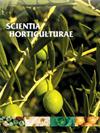Effects of shading, mulching and growing season on physiological indicators, anatomical characterization and quality of gladiolus flower stems
IF 3.9
2区 农林科学
Q1 HORTICULTURE
引用次数: 0
Abstract
Crop management affects the anatomical and physiological characteristics of gladiolus floral stems. Particulary, shading screens are important in gladiolus production. The aim of the study was to evaluate the meteorological conditions, physiological indicators, stomatal characteristics, and quality of gladiolus flower stems grown in different seasons under shading screens and mulching. Field experiments were conducted during the four growing seasons: 1 (March-June 2019), 2 (August-November 2019), 3 (August-November 2020), and 4 (October-December 2021). Gladiolus cv. White goddess was grown in beds with and without mulch. Shading treatments included 35% black, silver, and red shading screens, and an unshaded control. Weather conditions during four growing seasons over two years were within the range of maximum and minimum temperatures suitable for the crop. The black and red shading screens resulted in higher stomatal density (374.9; 362.0 stomatal mm遮阳、覆盖和生长期对剑兰花茎生理指标、解剖特征和质量的影响
作物管理会影响剑兰花茎的解剖和生理特征。特别是遮阳网在剑兰生产中非常重要。本研究旨在评估在遮阳网和地膜覆盖下不同季节生长的剑兰花茎的气象条件、生理指标、气孔特征和质量。田间试验在四个生长季节进行:1(2019 年 3 月至 6 月)、2(2019 年 8 月至 11 月)、3(2020 年 8 月至 11 月)和 4(2021 年 10 月至 12 月)。在有地膜覆盖和无地膜覆盖的花床中种植了剑兰品种 "白色女神"。遮阳处理包括 35% 的黑色、银色和红色遮阳网,以及无遮阳对照。两年中四个生长季节的天气条件都在适合作物生长的最高和最低温度范围内。黑色和红色遮光幕使气孔密度更高(374.9;362.0气孔毫米-2),从而提高了叶片的光合速率,使红色遮光幕的花茎长度(116.32 厘米)和小花数量(19.00)更大。第 2 季记录的相对叶绿素指数最高(57.75),这有助于同化物的更多积累,使茎更长,小花质量更好。与未遮阳的对照组相比,在红色遮阳网和覆盖土壤下种植的第 2 季(8.43%)和第 4 季(14.74%)花茎更长(分别为 8.60%和 9.05%),小花数量更多。银色遮阳网(3.6%)和覆盖土壤(6.7%)中花茎受损的比例最低。萼片和花瓣无损伤、小花数量多的长花茎质量更好,观赏价值更高,对花卉消费者更具吸引力。我们的研究结果表明,在第 2 季和第 4 季种植剑兰、使用红色遮阳网和覆盖土壤是可持续的保护性土壤管理方法,可提供良好的环境,使我们能够获得高品质的剑兰花。这项研究的结果为今后使用不同的土壤覆盖物和遮阳网颜色进行研究提供了参数。
本文章由计算机程序翻译,如有差异,请以英文原文为准。
求助全文
约1分钟内获得全文
求助全文
来源期刊

Scientia Horticulturae
农林科学-园艺
CiteScore
8.60
自引率
4.70%
发文量
796
审稿时长
47 days
期刊介绍:
Scientia Horticulturae is an international journal publishing research related to horticultural crops. Articles in the journal deal with open or protected production of vegetables, fruits, edible fungi and ornamentals under temperate, subtropical and tropical conditions. Papers in related areas (biochemistry, micropropagation, soil science, plant breeding, plant physiology, phytopathology, etc.) are considered, if they contain information of direct significance to horticulture. Papers on the technical aspects of horticulture (engineering, crop processing, storage, transport etc.) are accepted for publication only if they relate directly to the living product. In the case of plantation crops, those yielding a product that may be used fresh (e.g. tropical vegetables, citrus, bananas, and other fruits) will be considered, while those papers describing the processing of the product (e.g. rubber, tobacco, and quinine) will not. The scope of the journal includes all horticultural crops but does not include speciality crops such as, medicinal crops or forestry crops, such as bamboo. Basic molecular studies without any direct application in horticulture will not be considered for this journal.
 求助内容:
求助内容: 应助结果提醒方式:
应助结果提醒方式:


